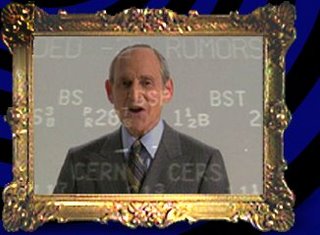What's so fun about FUN?
"Hi. Welcome to the future: San Dimas, California --- 2688. And I'm telling you, it's great here. The air is clean, the water is clean, even the dirt is clean! Bowling averages are way up, minigolf scores are way down. And we have more excellent waterslides than any other planet we communicate with. I'm telling you, this place is great!.... If I should fail to keep these two along the correct path, the basis of our society will be endangered. Ah, but don't worry, it'll all make sense. I'm a professional."
This is by no means a sure bet, we know. Witness the recent plight of Six Flags (Sym: SIX), which analysts say had let its operations slip into something more like fly by night carnival than say, a Disney production (Sym: DIS). There turn around story is pinned on the hope that families will see that they are serious about good clean family fun, vs. the other kind..
So is collecting almost 7% from all this fun TGTBT? FUN owns and operates 12 amusement parks, and revenues are down on the year as the result of its indoor water park in Sandusky. At 21%, it has lower than average institutional ownership base, which is 49% It is trading at it's 200 day moving average, so there is no bargain to be had by plouging in just now.
FUN's peer group includes everything from cruise lines to fitness companies to race tracks to DVD rental companies. The big players are cruise lines, including the Carnival (CCL) and Royal (RCL) and Warner Music (WMG); and the smaller market cap companies include Six Flags (SIX), World Wresteling (WWE), Blockbuster (BBI). and AMF Bowling (AMBWQ). How does FUN compare, is the question; and if you look at net margins, you'll get a pretty clearn answer-- FUN looks very good at 27.9% with it's 565 million revenues, and with a P/E ration of 9.5 vs. say 18 at Carnival, or Vail Resorts at 5.5% net margin and with a P/E of 33.
Of course, there is Littlefield Corporation with a net margin of 13% trading at a p/e of 4.2 from it's Bingo Hall development business, but does LTFD, which also trades on the OTC Bulletin boards yield what FUN is passing out to shareholders. No, it does not. Speedway Motorsports also has a nice margin and a p/e on the low end, but does it yield what FUN yields. No. So, FUN looks good from a couple of angles.
What about revenue growth? Well, the neighborhood looks a little tight, like a group of row houses in Queens anyway; but more than half appear to have bad EBITD margins and are also not growing at any notable rate. So FUN looks good, by comparison anyway.
FUN also looks good in other respects when held up to other companies in its industry. FUN trades below the industry averages of trading prices to sales, to book values and to cashflows. And dramatically so. For example, FUN Beta is just .5 vs an industry wide Beta of 1.2. Here are more: it's P/E of 9.5 is almost half of the 18.8 for the industry. Price to cashflow is 6.8 is almost half of the industry's 12.3, and it looks even better when held up to its sector.
Revenue growth is slight, but so is the group, save the direct DVD mail, bingo halls and speedway companies (NFLX, LTFD and TRK), which there again, do not pay investors to wait. FUN also leads the pack when it comes to it's profit margins vs. its own 5 year average profit margins. so it looks good vs. its past 5 years.
FUN has a return on equity of near 50%, which leads the field, but its total debt to capitalization approaches 60% too, which is on the high side of its peer group. Since 1998, admission have increased every year-- "no way? yes way!"
So, there is a joke about rollercoasters and stock charts in here somewhere, but we'll leave it to you to find it, just as we'll leave it to the reader to make up his or her mind about the tradeoff for FUN, which gives shareholders almost 7% to wait from a business that looks pretty good from most angles vs. its peer group of cruiselines, DVD rentals companies, speedways, fitness centers and bingo halls out there. It's not really trading at a discount to its moving averages at this level, but it may be worth watching and waiting for a pullback to plough in, but don't quote the yield hoe on that. As always, the moves you make in the securities markets are your own, so choose wisely, and remember, it's ready, aim, fire-- not fire, ready, aim.



